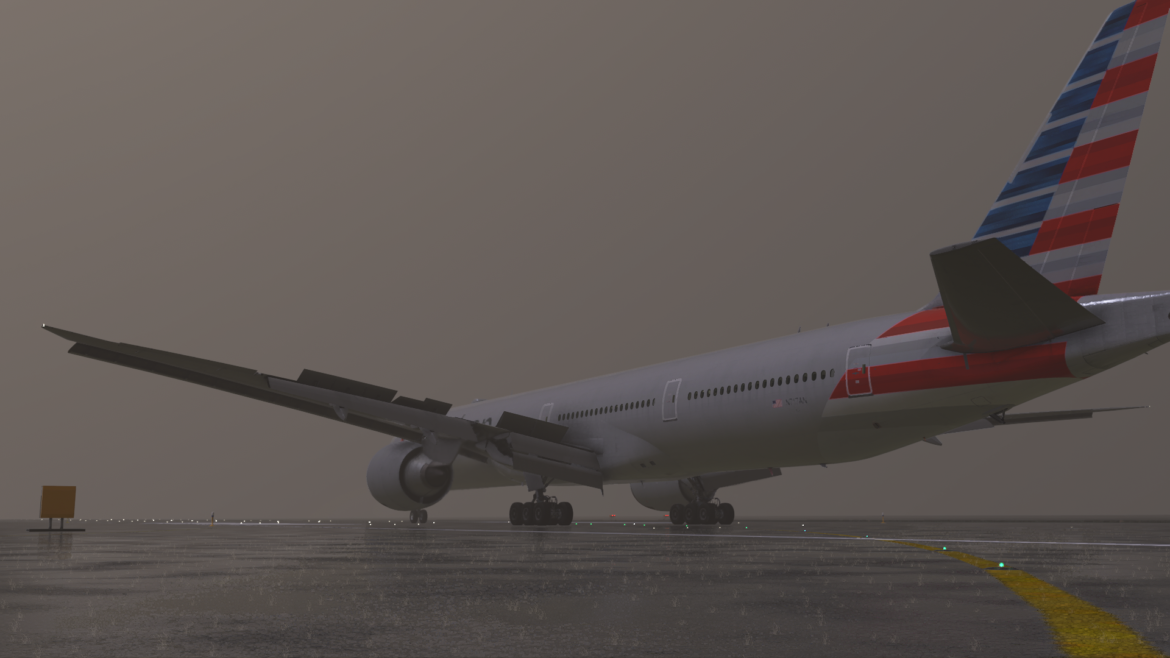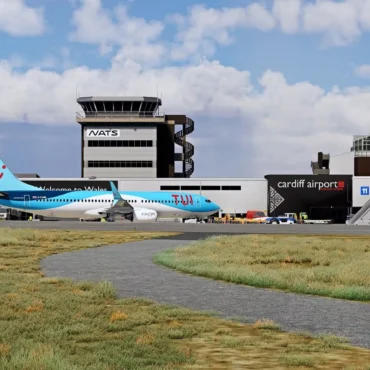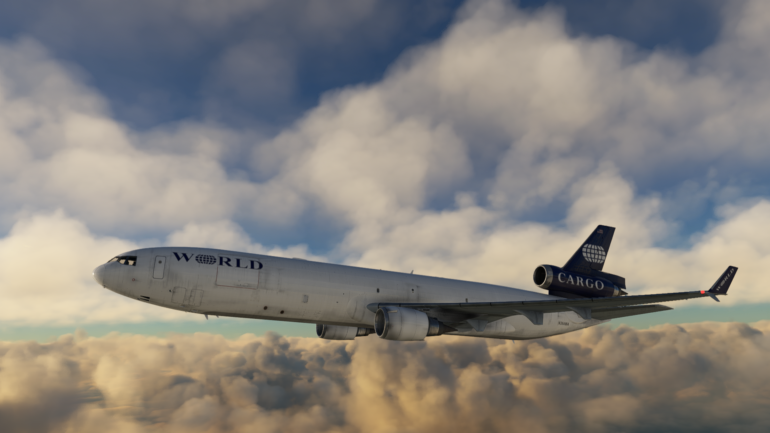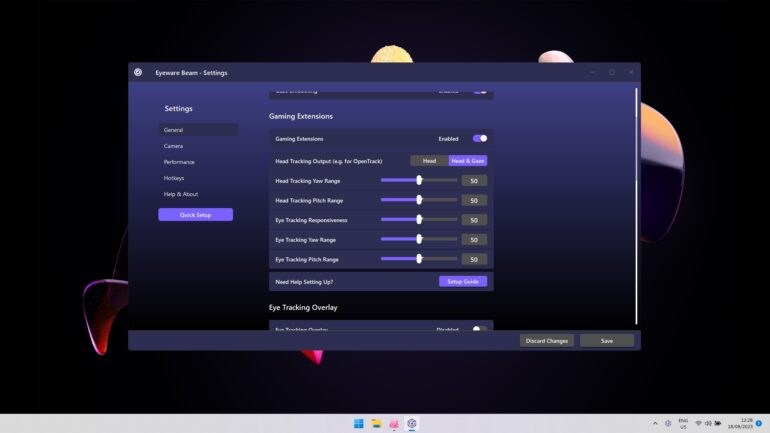AD
We live in an amazing time when it comes to our shared hobby of flight simming. Never have we had such access to so many various aircraft to fly whether it be freeware or
pay ware. You can fly sophisticated, state of the art aircraft around the world or pretend you’re Santa Claus and fly his sleigh on Christmas night. The only downside is that some of these payware aircraft can be hastily put together and sold at what seems to be a bargain only to put a damper on your flight Sim experience. I’m not going to bash freeware because let’s face it… It’s free. However, there are payware aircraft that just hit all the marks.
You know that the creators studied, researched, and are passionate about the product they are producing for our community. They work countless hours making sure the customers’ flying experience is as real as it can be. The product I am referring to in this review is the 777-300ER by PMDG.
I’ll be completely honest, when I was asked to review this plane, I was stoked. I’ve heard so many of my flight Sim peers praise PMDG products, but I was always reluctant to purchase their product because in the past, I’ve usually been on a very tight flight Sim budget. So, let’s jump into this big bird and see what it’s all about.
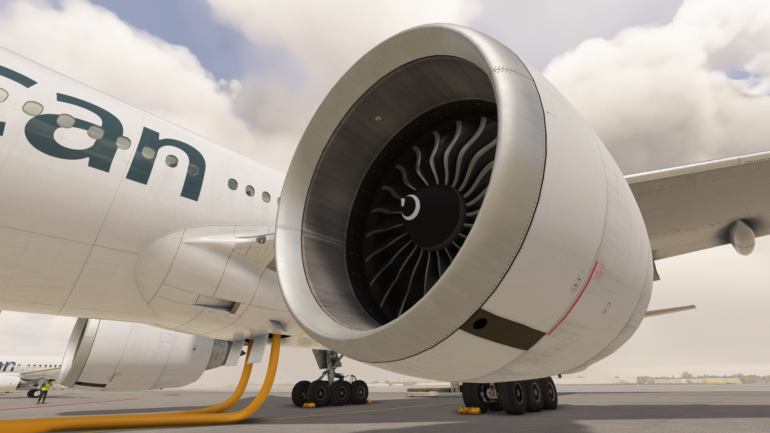
I decided to start off by going headfirst into a long-haul flight from Miami to Sao Paulo, Brazil. Loading up the American Airlines livery from the provided PMDG Operations Center. Placed at gate 96 it was time to walk around and see the details I’ve heard so much about. The aircraft model is absolutely superb with details I’m still discovering with each flight. My favorite example is the tires actually show wear after so many landings. This tire wear can also be verified on the tablet under the ground maintenance tab. There are also a multitude of customizable options on the FMS for aircraft states, realism settings, failures, and display options. The APU startup and flight displays were easy to start and the whole procedure time wise is realistic to the actual aircraft. If you’re like me, I went to YouTube whenever I was confused on any procedure and I found “A330 Driver” to be a wealth of information. So go check him out when you get a chance. Flight plans via Sim Brief were easy to upload into the FMS as well as entering departure and approach procedures. The only real hiccup I had was trying to figure out the fuel load situation. However, seeking the assistance of YouTube helped me yet again. The processes are hard to forget after you do them a few times so thankfully the 777 is more user friendly than I anticipated.
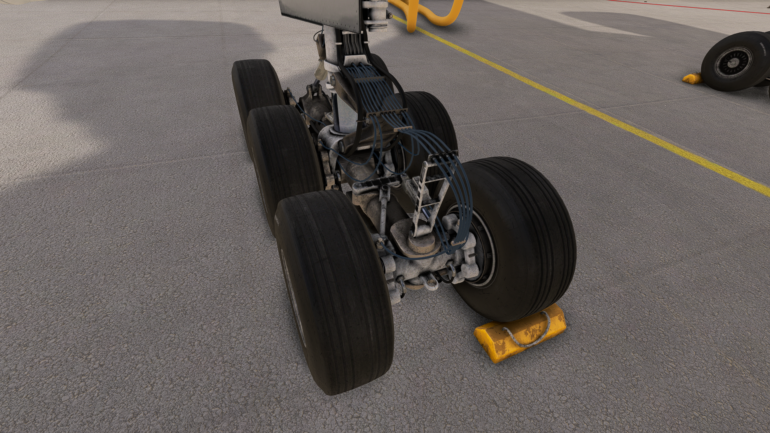
Engine start up is about as simple as I’ve experienced with a complex jetliner and the spooling of those massive GE engines sounds glorious. Taxing, however, requires a bit more forward thinking because this plane is a behemoth. You need to give this bird a wide berth and be committed to where you’re going at the airport. But with that said the ground handling was solid and responsive.
Lined up on the runway I hit the TOGA button and those mighty GE engines roared to life. The plane got up to speed quickly, which is a testament to just how much power these engines put out. Climb out was smooth and brisk and the FMS flew the departure with no issues. At cruise altitude the aircraft felt so realistic when any turbulence was encountered. When you take a break from the cockpit you can explore all the details of the 777 cabin. Every class of seating is modelled appropriately as well as the galley areas. Sitting down in a window seat just forward of the wing I noticed amazing wing flex and engine cowling sway while moving through turbulent air. It’s these details that just make you fall in love with this plane. Descent and approach are actually a bit tricky because this aircraft does not want to slow down. If you want to keep your airspeed and altitude on point you need to play with the spoilers quite a bit. This is once again a characteristic of theactual aircraft. This makes it really easy to get behind the airplane which resulted in merushing to slow the plane down for final approach. Aside from my mistakes the FMS followed the assigned approach without issue and now it was time for final approach. The localizer and ILS captured perfectly and followed smoothly and evenly down to my decision height. After taking control from the autopilot, I tried to smoothly kiss the runway but instead bounced the aircraft upon initial contact. This was another reminder of howhuge the 777 really is. Flaps full, spoilers out, engines full reverse with auto brake set to 3 I came to a swift stop after exiting the runway.
After landing you can check out the brake temperature on the lower console screen which can run really hot really quick and take quite a while to cool off. Another realistic feature to add to the emersion of flying the 777-300ER.
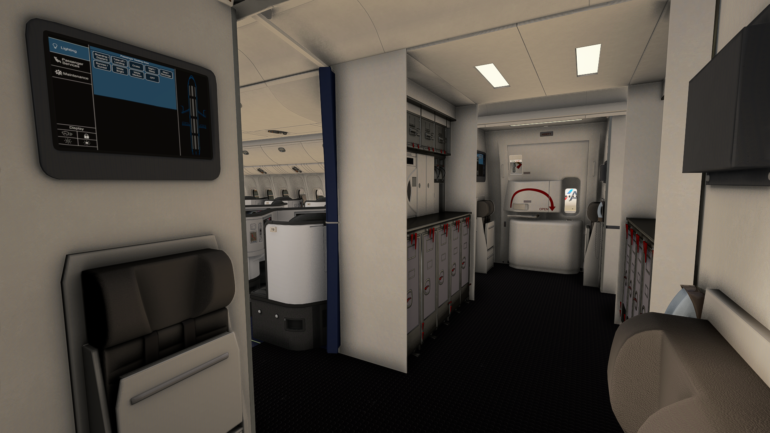
After arriving at the gate and shutting down the engines I was amazed at how fun and realistic this aircraft proved to be. I could go on and on with everything the plane has to offer from the highly detailed model to the real-to-life functionality and performance, the PMDG 777-300ER is worth every penny and more. It proves the age old saying that “you get what you pay for,” and boy, do you get a lot.
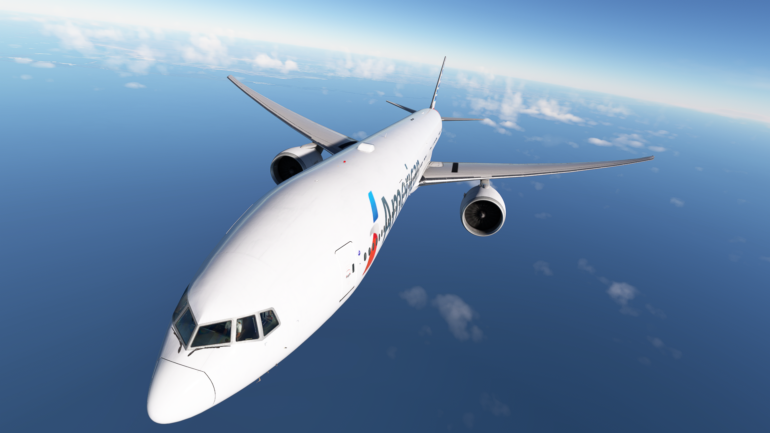
AD

